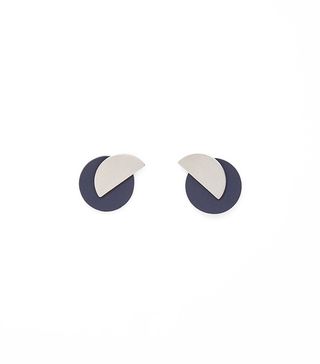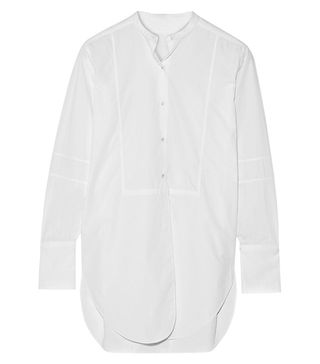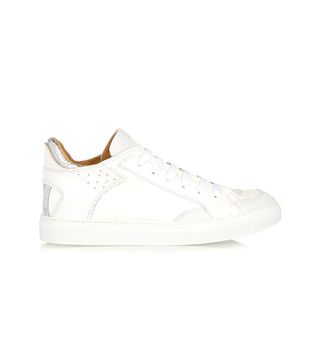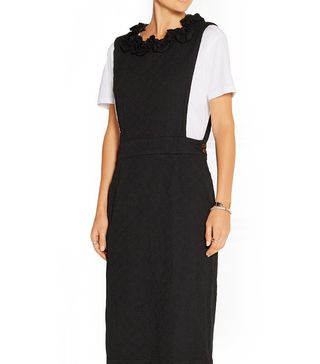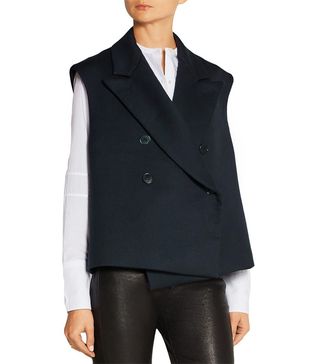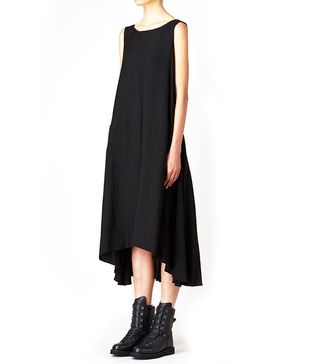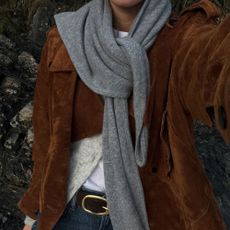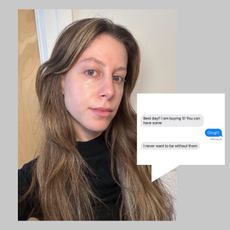How a University Professor Started Her Successful Fashion Blog

Discovering new fashion bloggers with fresh perspectives is something we take seriously here at Who What Wear headquarters, which is why when we came across Accidental Icon, we knew we had to meet the intelligent woman behind the blog to pick her brain—and we did! After a recent meet-up at Fordham University, where she is a professor, we left feeling invigorated and ready to take on the world. Scroll down to see what she had to say!
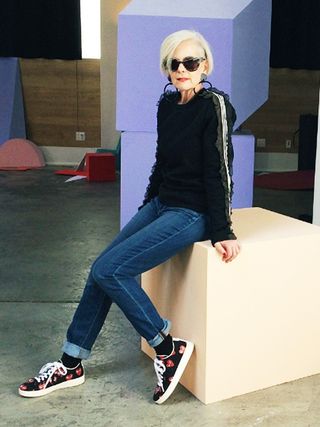
Tell us about yourself!
“I’m originally from New York, and I am a social welfare professor at Fordham University. About a little over a year ago, I started Accidental Icon. How that came to be was I’ve had a long-spanning interest in fashion, and I had taken courses just for fun at FIT. I was trying to think about a way that I could express my creativity, explore my passion for fashion, and have a different experience in terms of writing than the one I have in academia. So I started to do some research. I had been unsatisfied as a consumer in terms of finding a fashion platform that really spoke to my demographic in terms of—and I don’t mean age—I mean sensibility. There are magazines for my age demographic, but it’s still really a lot of focus on anti-aging and things like that, and really nothing for someone who, like myself, is kind of urban, intellectual, enjoys art and culture. So I saw a real vacuum in not only print, but when I started researching blogs. Also a gap for myself in the blogosphere. So that’s what made me think about what might be a niche for me. And so, I didn’t really want to do outfit of the day. I wanted to use the blog as a structure for me to learn more about fashion. I wanted to do some writing. I noticed that a lot of other blogs were very busy, they had a lot going on, a lot of advertising. And so right from the start, I made the blog very clean. All the original pictures were in black and white, and I think I was just trying to do something that was different. And so that’s sort of the thinking process behind Accidental Icon.”
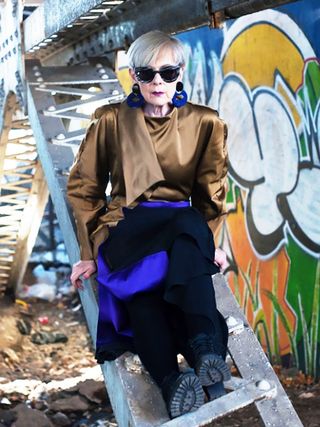
“The other part of it was that I’ve always been interested in fashion. As I got older, I had to come to grips with how am I going to age, and when you first understand that you’re aging, you have to kind of go through a process because some of it I was not happy about. So I came to a place where I was going to accept it as a natural process, and I started to experiment more with what I was wearing, to take more risks. And ironically, people say that when you get older, you become invisible. For me, it was the exact opposite. I’ve never been more visible in my life. A lot of young people, but people of all ages began to say things to me like ‘Your style is amazing,’ ‘You should do a blog,’ and I kept hearing that. So I went to fashion week because it used to be right down the block and I was meeting a friend on the plaza, and we were going out and so I was kind of dressed. I think I had a Yamamoto suit or something on, and all of a sudden, all these people started taking my picture. And then tourists were watching them take my picture, and they started taking my picture, and I think everyone thought I was some fashion person, but I wasn’t. So that’s sort of how I came up with the name Accidental Icon, because so much of this has been a happy, lucky accident."
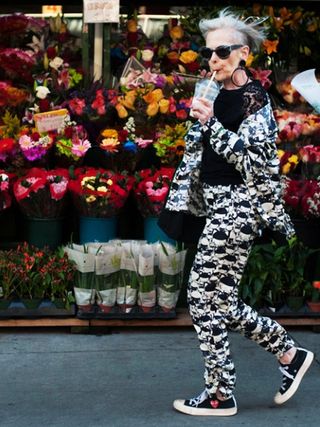
How did you dress when you were younger? What was your style like?
“Well, I think I always dressed fashionably. I think I always had style. People would always tell me that, but I had more objectives in my dressing, like you’re a young professional, there are codes about dressing, it depends on what you’re trying to achieve, who you’re trying to influence. So I think I probably dressed as I was establishing myself in a professional world, in an academic world, you know, classic professional. Lots of suits, things like that. But I would always have a little flair to it somehow. I would always make it mine in a particular way. I think that as a human being, to me, if you want your life to be exciting, you are changing and growing all the time. And you’re learning new things and you’re having experiences that change you, right? So I think style, of course, is part of your identity and how you express it. So as you have multiple identities as a woman in your life—mother, worker, girlfriend, wife, whatever the case may be, you will bring your style and those identities interact with your style. And so, I think it’s wonderful that your style can change.”
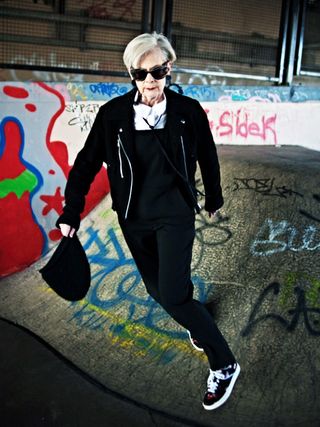
Do your students read your blog? Does it come up in your classroom?
“Well it’s interesting because my students always liked the way that I dressed. And I really, initially, didn’t tell anyone here at Fordham about the blog. I think I was really trying to keep it separate, but my students found me on Instagram, and they kind of outed me. So now the university knows about it, and in fact, they’re exploiting it for PR reasons, which I think is kind of funny. You know, I’ve written a book, but they didn’t do an article about that, but now that I’m Accidental Icon, they sent someone over to do an article, so it’s funny.”
How do you choose what to write about and how often to post?
"Well it’s interesting because it’s very improvisational, but with a strong platform from which to be provisational, because you know, I brought my academic self to this, so during the week, I read a lot of articles about fashion. And I like to read not necessarily Vogue, but i-D and Dazed. And so I’m constantly reading. I read Business of Fashion, Women’s Wear Daily, [Who What Wear]. And so, the way I do it, I do not have a calendar. On Saturday morning, I am very fortunate. My partner, Calvin, is my photographer, and we will basically get up. And at that point, I’ll either have a piece of clothing that I want to write about and something from what I read during the week may inform that, and then we just decide, ‘All right, based on that, we’re going to go to X neighborhood.’ And then inevitably, we find some way, something to interact with that is unanticipated. And so, sometimes I’ll have an idea about what I want to write before we take the picture. Sometimes it comes from looking at the picture. But I am doing it week to week.”
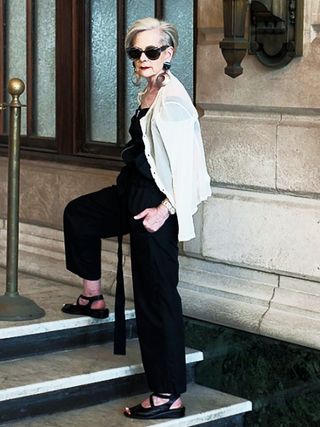
What do you think of social media?
“Like anything else in life, there are good things about it and maybe not such good things about it. I think there are some ways that it’s oppressive. If people think I must look like that, I have to buy that, you know, I think though that it’s amazingly productive. I mean, just pick me for an example. I am just some older college professor who decided to do a blog, and because of social media, it’s been like I can’t even describe, the opportunities that have come to me, the people that follow me, my Instagram is crazy. So that never would have happened to me if it weren’t for social media. And I think a lot of people can communicate their own unique style through it. So in those aspects, I think it’s a good thing.
“I think it has sort of broken some of the strict boundaries that fashion has because the thing that you notice now in fashion week, it’s not just what’s happening inside. It’s what’s happening outside. And so you have the whole street style, and to me that’s increasing the inspiration for how I might put together an outfit. Instead of just looking at what’s on the runway, I’m seeing somebody in a street style photo wear an H&M top with a $10,000 skirt. So I find a lot of it inspirational. I like that it’s visual, because for me being an academic, usually I’m just looking at text, so the visual part of it I really love.
“You have to think about it. And I think you have to be thoughtful in how you’re using it and what you’re trying to achieve from it. And these are decisions now that are coming up for me when I get a lot of requests to be on these platforms that link you up and do affiliate linking and things like that. And for me, these are really important decisions that I’m thinking about, and I think about ‘Well, how is this going to make my readers feel?’ I feel that you can do social media to sort of exploit people and you can use social media to have relationships with them. And I work very hard at having relationships. And so it’s been challenging, but in a good way, to think about well, how could I make my, you know—let’s say I want to retire from academia and do this full time, what might be some interesting ways aside from that selling, that I could make more opportunities from this? So again, it’s about, it’s what I promote on my blog about clothes—they’re powerful. And you should be thoughtful about them because you can use them very productively or they can be used very oppressively. And there’s a lot been written about that like how it impacts women’s self-esteem and bodies and things like that. But I think they can also be powerfully good, and when you think more purposefully about what am I putting on myself, what do I want to show, who’s my audience, what am I trying to say, that it can be a really—a platform that can start all kinds of amazing conversations.”
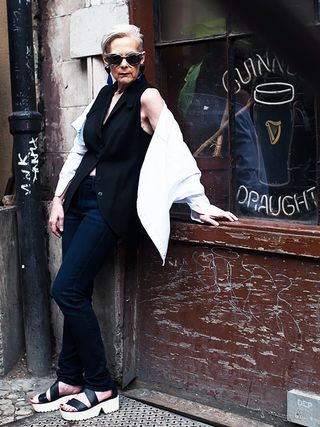
In your opinion, what changes in fashion have made the most impact over the last few decades?
“I think the question of the access. It used to be sort of a very secret and kind of hidden experience, going to a fashion show. Now, within minutes after the show, I can see ‘Oh, what did Miyaki do this season?’ So I think the accessibility of it. I think the other change that I don’t think is good is how fast it is and how there are so many different seasons. And I guess I’ve done a lot of reading, because I’m interested in this, on how that has impacted individual designers. And so you see more of these issues … where the stress of this constant, I mean, it’s how many times a year now? It’s pre-fall, fall, resort, spring/summer. That’s such pressure on creativity.”
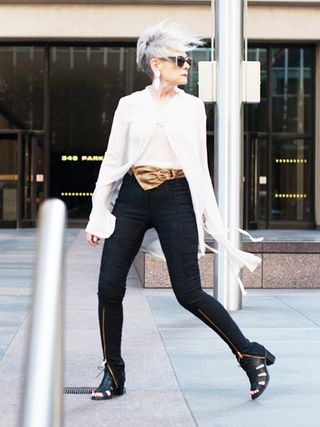
Where do you shop?
“Where do I shop? I usually only shop retail for my basics. My pieces that I construct around, for the most part, I get at consignment shops, vintage shows, some online places like Vestiare Collective, because I like a unique piece. And my favorite designers are the Japanese designers, and I particularly love the vintage pieces that were done in the ’80s and the ’90s, when they were first breaking out. Also, I am very good at finding, knowing when to shop, so I am able to—I always go to Dover Street Market at the time when things are 70% off and so I can get some really good things that way. Increasingly, I haven’t had to shop much because a number of young designers, through Instagram, have been asking me to wear their clothes. And they have been really nice clothes. And I will not agree to wear something that I don’t rightfully own, that I wouldn’t buy, that I wouldn’t endorse 100%. So my last several posts have all pretty much been designers who said ‘I love you. Would you mind wearing this? Take a look, see what you like’. And I really like helping them because they spend every dime they have on just getting their clothes made, so they don’t have the PR budget. And so I don’t mind giving them a hand, you know, posting something on Instagram or doing a post about them. And I’m also interested in the story behind the clothing. The young designers have such great stories to tell about their passion and their inspiration and things like that.”
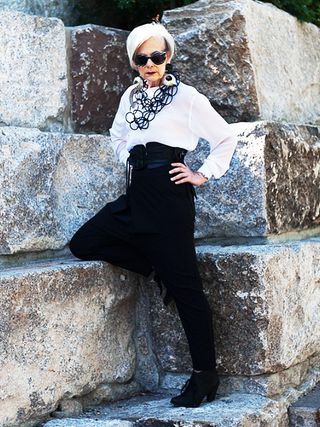
What’s the most important style advice you’d give young women today?
“One of the things that people ask me to do all the time is to describe my style. And so I have words like nonchalant, provocative, I have sort of five words that really are different aspects of my personality that clothes help me to express. So what I would say to young women is to rather than look outside to figure out what your style should be, to start first and say, you know, do the five words. And what is really amazing is if you have a word in mind and then you look at clothing, it transforms how you see it in a way. And then it really becomes about you. And I think that is the most important thing about style, is that it has to be about you.”
Shop our picks inspired by the Accidental Icon!
Would you like to see more blogger spotlights like this? Tell us your thoughts in the comments.

Nicole Kliest is a freelance writer and editor based in New York City who focuses on fashion, travel, food, wine, and pretty much anything else that's amusing to write about. After graduating from Pepperdine University with a bachelor's in journalism and creative writing, she started her career back in 2010 as Who What Wear's photo editor and throughout the last decade has contributed to publications including Fashionista, Harper's Bazaar, Elle, The Zoe Report, PopSugar, Fodor's Travel, and several others. She also copywrites and has worked with clients such as Frame, Sea, 3x1, Intelligentsia, and others to develop brand voices through storytelling and creative marketing. She's very passionate about the ways we can improve our sustainability efforts in the fashion industry as well as cultivating content that's diverse and inclusive of all people. When she's not checking out the latest restaurant opening in her West Village neighborhood or riding her bicycle along the West Side Highway, she can be found scheming her next trip somewhere around the world. (Up next is Vienna.)
